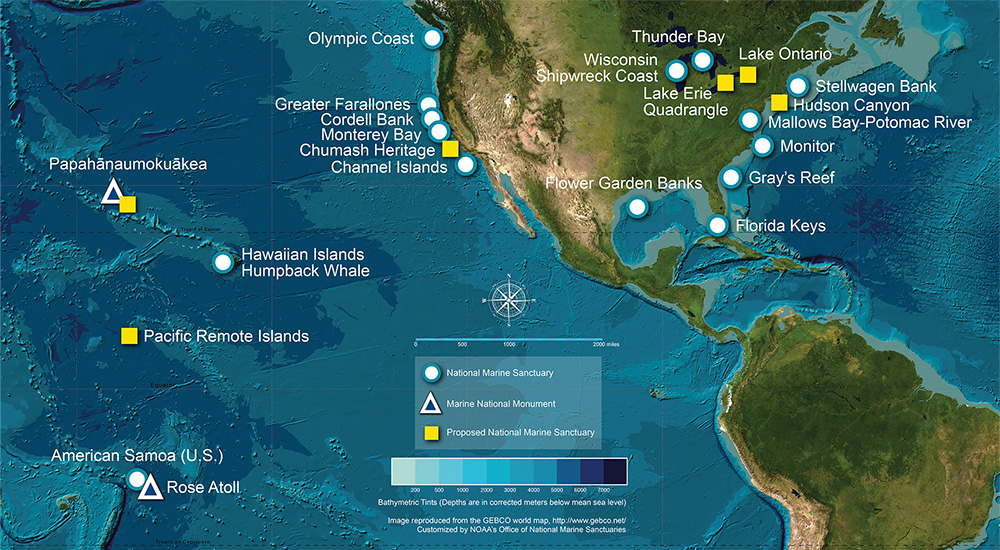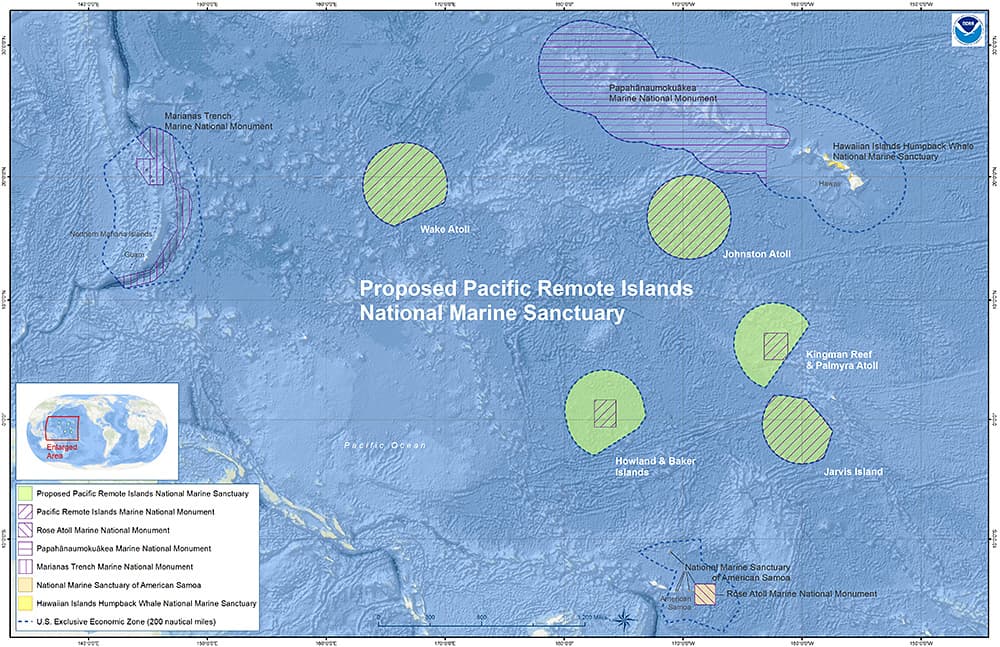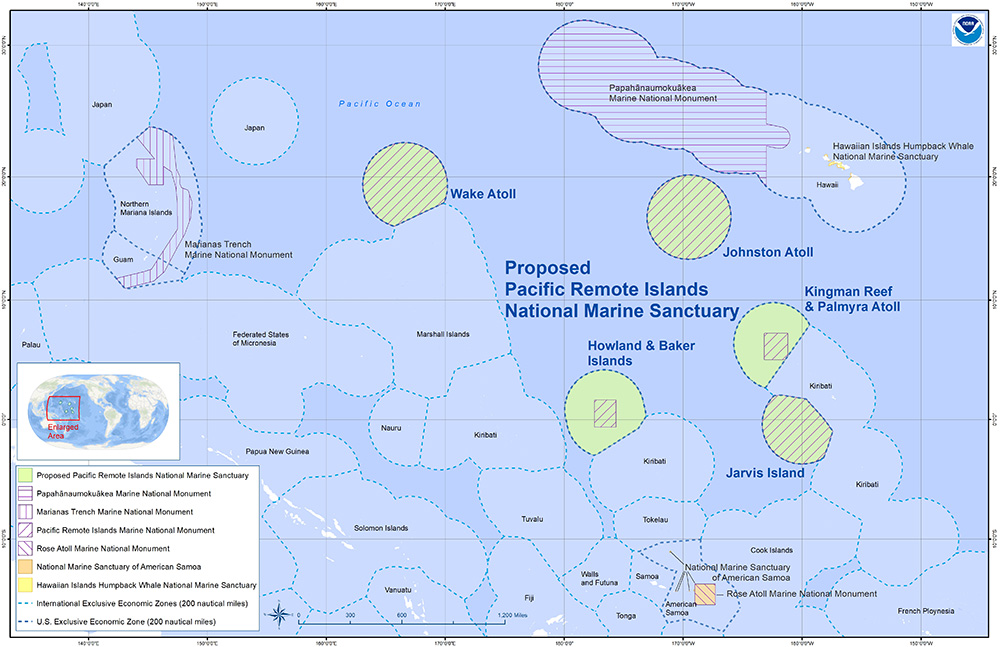On March 24, 2023, the President directed the Secretary of Commerce to consider initiating the designation process for a proposed national marine sanctuary in the Pacific Remote Islands area. On April 18, 2023, NOAA's Office of National Marine Sanctuaries issued a Notice of Intent to Conduct Scoping and to Prepare an Environmental Impact Statement for the Proposed Designation of a National Marine Sanctuary for the Pacific Remote Islands, launching the designation process.
Sanctuary designation would allow NOAA to complement and supplement the existing protections for the Pacific Remote Islands Marine National Monument, now known as the Pacific Islands Heritage Marine National Monument, with additional regulatory and non-regulatory tools, and to conserve additional areas outside the monument's existing boundary. The proposed sanctuary would not include terrestrial areas or diminish the protections of the existing monument designations.
Area of Proposed Designation
The proposed national marine sanctuary would include the marine areas within the existing Pacific Islands Heritage Marine National Monument, as well as those currently unprotected submerged lands and waters to the full extent of the U.S. Exclusive Economic Zone, an area totaling about 770,000 square miles. The Pacific Remote Islands encompass Baker, Howland, and Jarvis Islands; Johnston, Wake, and Palmyra Atolls; and Kingman Reef. The proposed sanctuary would not include upland areas.
Description of Resources
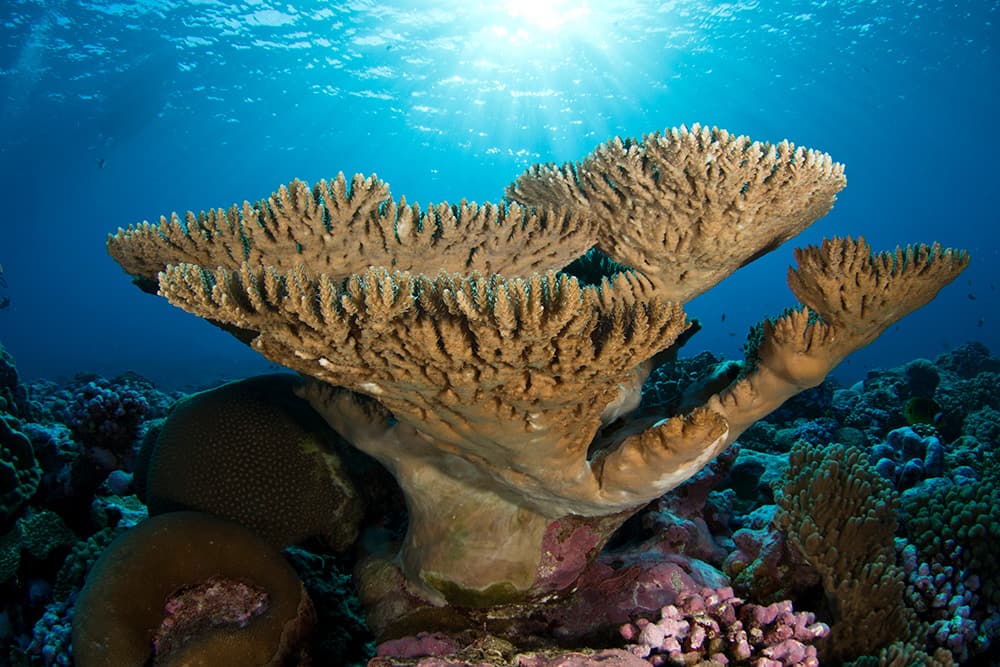
The atolls, shoals, banks, reefs, seamounts, and open-ocean waters surrounding the Pacific Remote Islands are home to some of the most diverse and remarkable tropical marine life on the planet, but are becoming increasingly vulnerable to impacts from climate change, invasive species, and marine debris. The region's diverse habitats and pristine reefs provide a haven for a variety of fish, invertebrates, seabirds, sea turtles, and marine mammals – many found nowhere else in the world – and are an ideal laboratory for monitoring the effects of climate change. For example, both Palmyra Atoll and Kingman Reef support higher levels of coral diversity (180 to 190 species) than any other atoll or reef island in the central Pacific. Numerous threatened, endangered, and depleted species thrive in the area, including green and hawksbill sea turtles, pearl oysters, giant clams, oceanic whitetip sharks, humphead (Maori) wrasse, bumphead parrotfish, spinner dolphins, and melon-headed whales.
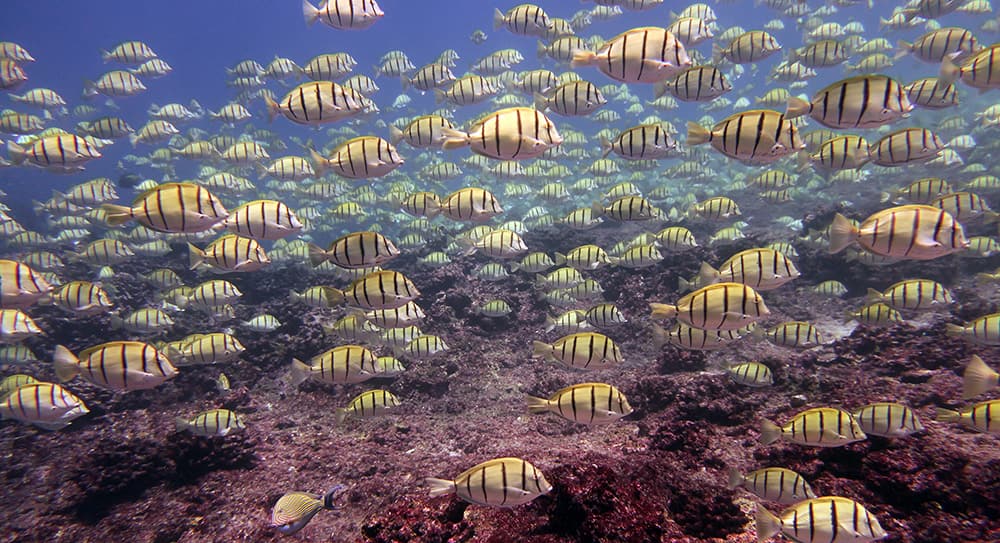
The proposed sanctuary would honor the ancestral, historical, and cultural connections to the Pacific Remote Islands and the surrounding open-ocean waters and recognize the importance of Indigenous knowledge, language, stories, and cultural connections between lands, waters, and peoples, and celebrate distinct cultures. Native Hawaiian, Samoan, Chamorro, Carolinian, and many other Pacific Island Indigenous Peoples, have voyaged across this vast expanse of the Central and Western Pacific Ocean over thousands of years, interpreting the stars, winds, and currents with great skill and proficiency to settle new areas, engage in trade and commerce, and exchange knowledge and cultures among distant communities.
Sanctuary Designation Process
Public Scoping
April 18 - June 2, 2023
- Seven in-person and two virtual meetings held in May 2023.
- Electronic public comments can be viewed on the Federal eRulemaking Portal, regulations.gov, search for docket # NOAA-NOS-2023-0052.
Current Step
Review of Public Comments and Preparation of Draft Documents
ONMS staff review all public comments submitted during the scoping period and produce a draft management plan, draft environmental impact statement, proposed regulations and proposed boundaries.
Release Draft Designation Documents and Solicit Public Comments
Public review and comment on the draft designation documents.
Prepare Final Designation Documents
After reviewing public and agency comments on the draft designation documents, ONMS staff make adjustments and produce the final designation documents.
Publish Final Designation Documents
Sanctuary Designation
For questions, contact proposed.prinms@noaa.gov
NOAA's National Marine Sanctuary System
Safeguarding America's Premier Marine Places
From Washington state to the Gulf of America and from the Great Lakes to the Pacific Islands, the National Marine Sanctuary System protects 18 underwater parks spanning over 629,000 square miles of ocean and Great Lakes waters. By investing in innovative solutions, we strengthen these iconic places to address 21st-century challenges while supporting America's commerce and tourism. These unique locations inspire people to visit, value, and steward our nation’s iconic ocean and Great Lakes waters.
Through the National Marine Sanctuaries Act, NOAA can identify, designate, and protect areas of the marine and Great Lakes environment that have special national significance.
